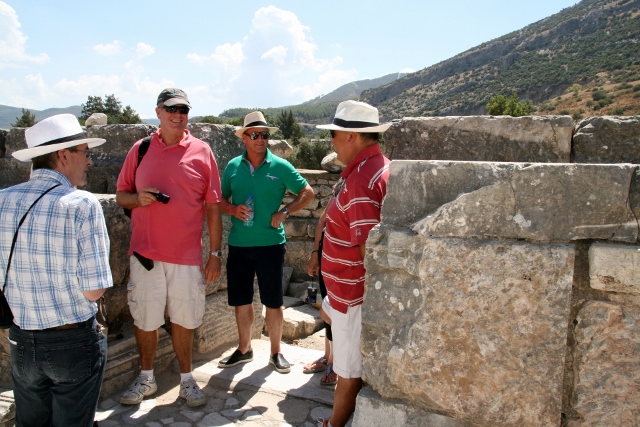Are you allowed to pun on blogs? The Meander River runs through Ephesus [or Efes in Turkish] and completely changed the course of Ephesus in history.
Imagine a city of pearl marble shining out to sea and you could sail right up to it, the sun rays dancing off the buildings and roads as you approached. A chariot would have pulled up to the wharf and taken you up past the amphitheatre for 25,000 people, past the library with its exquisite marble edifice, up to the temple of Artemis, where you could offer a sacrifice to the goddess and give thanks for your safe return home.
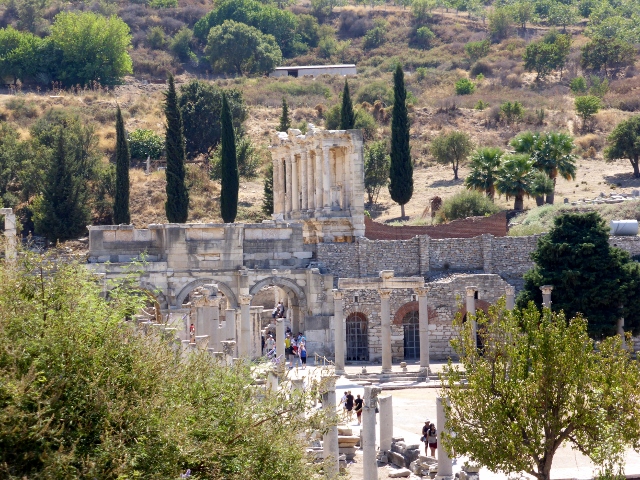
Ephesus was settled before the Bronze age, with Neolithic remains dating back to 6,000 years BC and it grew and retracted until circa 614 AD when both a large earthquake hit and destroyed many buildings and the Meander River silted up the port. Today the city of Ephesus is five kilometres inland from the Aegean Sea. Ephesus did survive after this time but it was much smaller settlement.
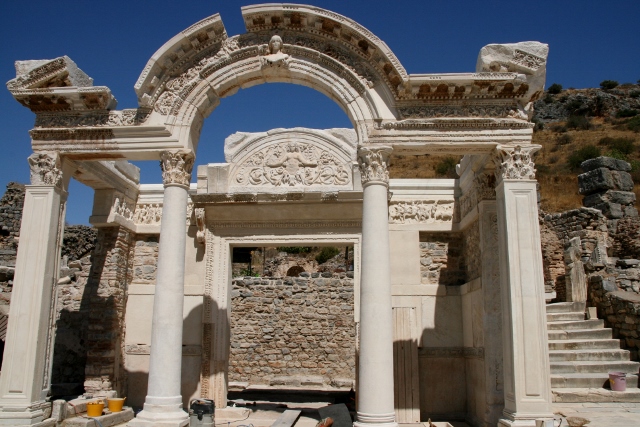
Religion has always been important here. The Hellenic gods, particularly Artemis were worshipped. St John came to Ephesus and helped to bring Christianity here. He is said to have written some of the Revelations here. There is debate that he brought Mary, Mother of Jesus to Ephesus and that she was assumed into heaven from here. Jesus and Mary are also sacred to Muslims, so Efes is important to them too. Our guide, Haldun, while showing us Hadrian’s Temple told us the Romans had temples to their gods and their emperors. They could determine who was Christian because Christians would not sacrifice at the Roman temples, so they were sent to the amphitheatre to fight with the lions instead.
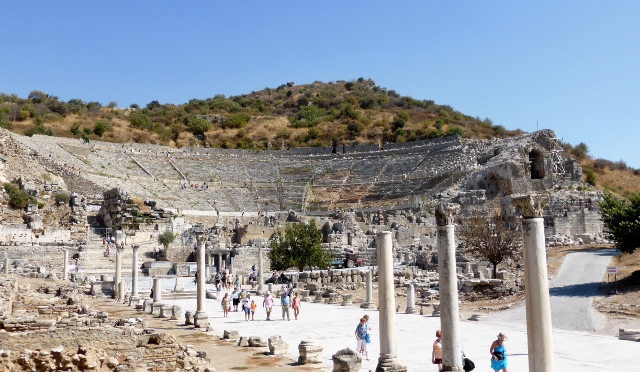
An early visit to library of Celsus is a memory I have captured in a photo. I have always been in awe of its grandeur. It held thousands of scrolls made of parchment and the building faces east so it was able to capture morning light. Egypt became very jealous of the library and decided to suspend supply of papyrus, but the clever Ephesians developed parchment, which was much more durable and longer lasting.
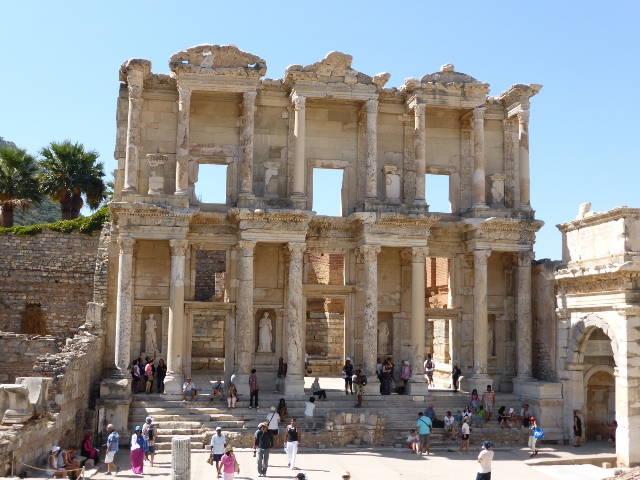
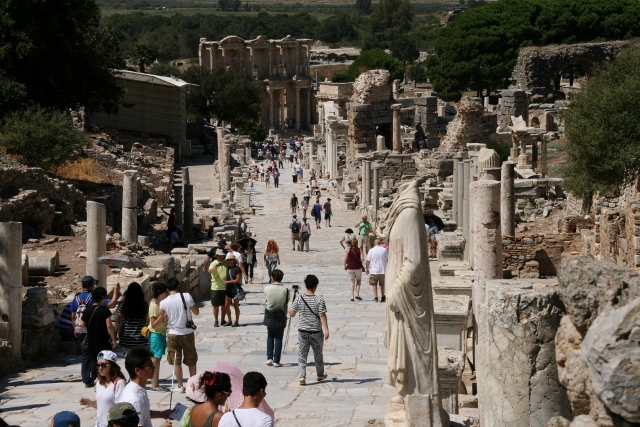
We were with a group of about nine people with the wonderful guide Haldun, who gave us so much information but also made the history come alive. I warn you, he does test you to make sure you are paying attention.
